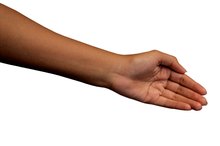Physical Therapy Treatment for a Long Thoracic Nerve
The long thoracic nerve is a branch of the cervical or neck nerves that supplies the chest wall muscles known as serratus anterior. The long thoracic nerve and serratus anterior muscle are responsible for forward arm movement like a boxing punch or working your arms overhead. In addition, several other muscle groups work in opposition to serratus anterior to fix the shoulder in a stationary position so fine handwork can be done. Physical therapy for this nerve depends on the type of nerve impairment and goals.
Function
The long thoracic nerve controls the serratus anterior muscles that fan out across the sides of the ribs anteriorly and insert into the scapula posteriorly. The scapulae are the two floating bones that are located on your upper back and help form the shoulder socket. Together, this scapula and shoulder unit allows the arm to move forward with the activation of the long thoracic nerve.
Dysfunction
C4 and C5 Nerve Damage Symptoms
Learn More
The long thoracic nerve may be injured by neck and thoracic trauma during motor vehicle accidents, sports injuries or surgical procedures of the arm, neck or chest. If the nerve does not function, then the affected scapula will lift off the chest when force is applied to that shoulder unit. This is called a winged scapula due to weakness in the attached serratus anterior muscle and is the hallmark of long thoracic nerve damage. A person will feel weakness when pushing forward with the affected arm.
Physical Therapy
If the nerves are completely normal and the goal is bodybuilding, then exercises that work the long thoracic nerves and serratus anterior muscles include pushups, pullups, bench press and rowing. If the nerve has been injured and gradual recovery is anticipated, then isolated shoulder and arm work with light weights under supervision is advised. If the nerve is completely severed, then other muscles will have to be trained to overcome the loss of serratus anterior. Many nerve injuries have accompanied pain and inflammation, requiring additional medical treatment for optimal physical therapy.
Recovery
Corrective Exercises to Help a Dropped Shoulder
Learn More
Nerve recovery depends on the nature of the injury. A complete severing of the nerve may cause permanent damage, but function of the specific arm movements can be restored by recruiting complementary muscle groups through physical therapy. A bruised nerve has the potential for complete recovery, but the length of the recovery time is variable. Rarely, physical braces or surgery are required for severe cases. Currently no medical treatments are available to speed nerve healing.
Related Articles
References
- "DeLee and Drez's Orthopaedic Sports Medicine, 3rd ed.: Long Thoracic Nerve Palsy"; Daniel C. Fitzpatrick, et al.; 2009
- "Canale & Beaty: Campbell's Operative Orthopaedics, 11th ed: Long Thoracic Nerve"; Mark Jobe, M.D., et al.; 2007
Writer Bio
Steve Lowery M.D. has written medical articles since 1981. His work has appeared in the journals "Respiratory Care" and "American Review of Respiratory Disease." He serves on an editorial panel for "Respiratory Care" and holds his medical degree from the Medical University of South Carolina. Lowery completed his residency at Highland Hospital in Oakland, Calif. His specialty is pulmonary medicine.









